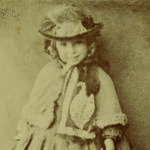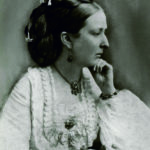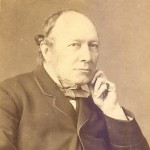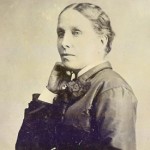Robert Louis Stevenson
The Life
Robert Louis Stevenson
Robert Louis Balfour stevenson (1850-1894)
A brief summary of Stevenson’s life. For more information see our recommended biographies.
Robert Louis Balfour Stevenson was born November 13, 1850 in Edinburgh, Scotland and was the only child of respectable middle-class parents. His father, Thomas, belonged to a family of engineers who had built most of the deep-sea lighthouses around the coast of Scotland. His mother, Margaret Isabella Balfour, came from a family of lawyers and church ministers.
Throughout his childhood, Stevenson suffered chronic health issues which confined him to his bed. These illnesses, frequently described as a “weak chest”, persisted throughout his life, taking the form of fevers, coughing, bronchial infections, and eventually the “Bluidy Jack”, a hemorrhaging of the lungs.
As a result of his persistent poor health, Stevenson had a limited formal education. Instead he was typically educated by private tutors and nannies, none so beloved as Allison Cunningham, whom he nicknamed “Cummy.” Cummy would regularly read to him from the Old Testament, Catechisms, and Bunyan’s Pilgrim Progress. This somewhat isolated childhood led to the development of a healthy imagination through which dreams of being a writer developed.




In 1867, Stevenson entered the University of Edinburgh as a science student where it was understood he would follow in the family tradition to become a civil engineer and join the family building firm. However, Stevenson was disinterested in the courses and turned his attention to French literature, Scottish history, and the revolutionary works of Charles Darwin and Herbert Spencer.
In addition to a diversion in his studies, he also began to develop a more bohemian appearance, growing his hair long and wearing a velvet jacket when about town. He also developed more atheist beliefs, diverging from those of his parents, and began spending more time in the lounge of the Speculative Society – a group for orators and writers at the university.
When Stevenson finally confided to his father that he did not want to become an engineer and instead wanted to pursue writing, his father was, understandably, upset. They eventually agreed that a professional degree was needed and so Louis would study law.
During summer holidays, Louis would go to France to be in the company of other young artists, writers, and painters. There he worked on essays and, upon returning to Europe, spent much of his time writing book reviews and articles while experimenting with short stories. His first published work, an essay called Roads, and his first published volumes were works of travel writing.
In 1875, Louis left university having “passed advocate” and earning a law degree. Never planning to practice law however, he continued to write – always keeping two books with him “one to read, and one to write in.”
Seeking an adventure to inspire his writing, Stevenson embarked on a canoe trip from Antwerp, Belgium, to northern France with his friend, Walter Simpson. This trip would later inspire his work An Inland Voyage.
In September 1876 Stevenson found his way to the small artist town of Grez-sur-Loing, outside Paris, to meet with his cousin Robert “Bob” Alan Mowbray Stevenson.
Unexpectedly, it was here that Louis was introduced to a married American woman, Fanny Osbourne, and her two children, Belle and Lloyd. At the time, Louis was twenty-five and Fanny, thirty-six. Despite this age difference, Louis fell in love with the intelligent and independent American “new woman” who was separated from her philandering husband.
For two years, their relationship bloomed until Fanny was forced to return to California and her husband. Having lost Fanny, Louis took his broken heart to the south of France for a walking tour. This journey would inspire his work Travels with a Donkey in the Cevennes.
A year later word came from Fanny that inspired Stevenson to travel to America in pursuit of his love. A steamer from Glasgow brought him to New York. He then traveled by rail and carriage until arriving in California. His arduous journey west would later inspired his work, The Amateur Emigrant. Reunited with Fanny after some time, Fanny received her divorce from her husband in December 1879 and in May 1880 the two were married in San Francisco.
The following months were spent in Napa Valley where Louis would pen his next work The Silverado Squatters.
In August 1880 the Stevensons returned to England. Stevenson and his wife had wintered in the South of France and lived in England from 1880-1887, a period of time marked by Stevenson’s poor health and literary achievements. His first novel, Treasure Island, was published in 1883, followed by A Child’s Garden of Verses (1886), Strange Case of Dr. Jekyll and Mr. Hyde (1886), and Kidnapped (1886). Stevenson’s work was widely popular and received great critical acclaim.
Upon his father’s death in 1887, Stevenson and his family left England for America where he stayed for one year. In June 1888, accompanied by Fanny, Lloyd, and Margaret, he set sail for the South Seas.
Enchanted with life in the South Seas and convinced he could not endure another winter in Scotland, in January of 1890 Stevenson purchased an estate in Apia, Samoa. The climate of the tropics did wonders for Stevenson’s health and the regular postal service meant he could continue regular correspondence with his publishers.
Stevenson lived on his estate, Vailima, in the hills of Apia until his death at age 44 in 1894. While at Vailima, Stevenson wrote a great deal completing two of his finest novellas, The Beach of Falesa and the Ebb Tide (written with Lloyd) as well as two novels, The Wrecker and Catriona (aka David Balfour). He also completed the short stories, The Bottle Imp and The Isle of Voices.
On December 3, 1894. Louis seemed in excellent spirits when he suddenly collapsed from a violent pain in his head and he lost consciousness. Stevenson, having suffered a brain hemorrhage and died soon afterwards. He was interred the following morning at the top of Mount Vaea.
Visit the Museum
The Robert Louis Stevenson Museum is open
Tuesday – Saturday from 12 to 4 PM
Give to the RSLM
The Robert Louis Stevenson Museum depends on many sources to support our mission to preserve and promote the legacy of RLS
Address
1490 Library Lane
P.O. Box 23
St. Helena, CA 94574
Hours
Tuesday 12 PM – 4 PM
Wednesday 12 PM – 4 PM
Thursday 12 PM – 4 PM
Friday 12 PM – 4 PM
Saturday 12 PM – 4 PM